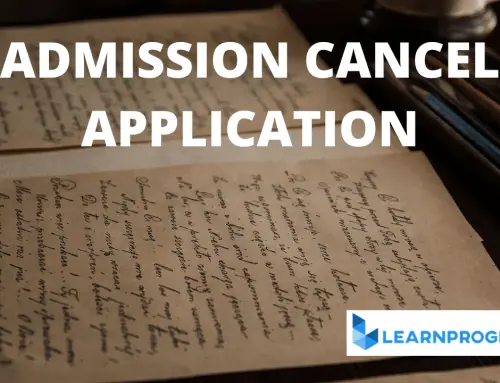Today we will learn how to Check Java Version in Cmd. So there are mainly two methods to check the Java version which are:
- Using Command Prompt.
- Using Control Panel.
We will learn both the methods one by one.
Table of Contents
1. How to Check Java Version in Cmd for Windows 10
1st Step: Click on the windows button situated in the left side corner of the screen or press windows button from the keyboard.

2nd Step: Now type cmd in the search box. The list of the programs will appear on the screen.
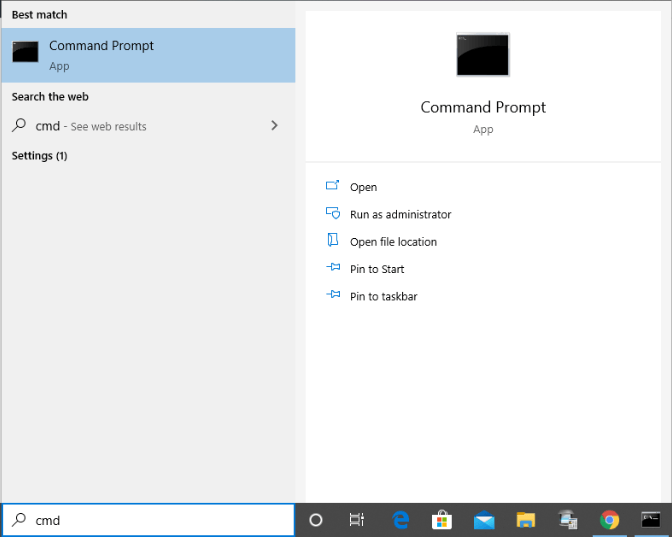
3rd Step: Click on the black coloured application which contains white coloured C: text.
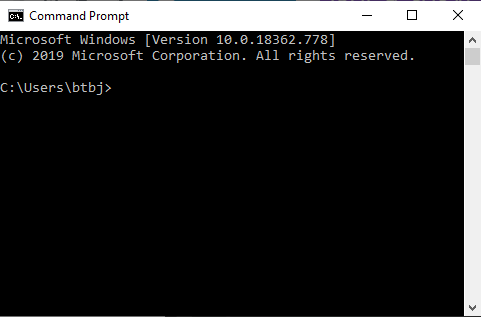
4th Step: After opening the application just type java -version in the window and press Enter. This is the application where we will know which java version is installed in our PC.
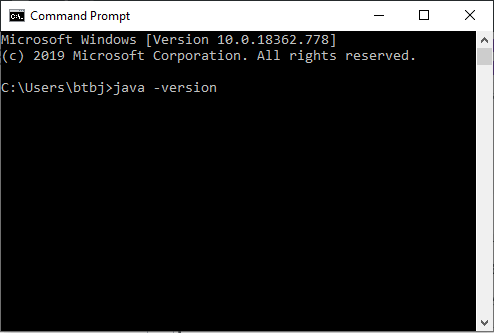
Note: After entering the command if prompt doesn’t show anything then there will be some error while typing the command. Or the java might not be installed in your PC.
To download the latest version of Java Click on this link https://www.oracle.com/in/java/technologies/javase-downloads.html .
5th Step: After pressing the enter button from the keyboard the details of the java version will be displayed as shown in the below image. I have installed java version “1.8.0_251” on my PC.
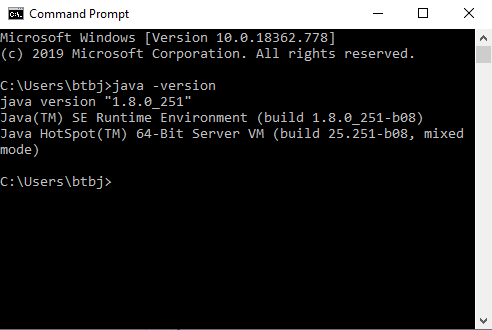
2. Using Control Panel
This is an alternate method to check the current java version installed in your PC. Let us see how to check java version using control panel.
1st step: Click on the windows button and search for the Control Panel.
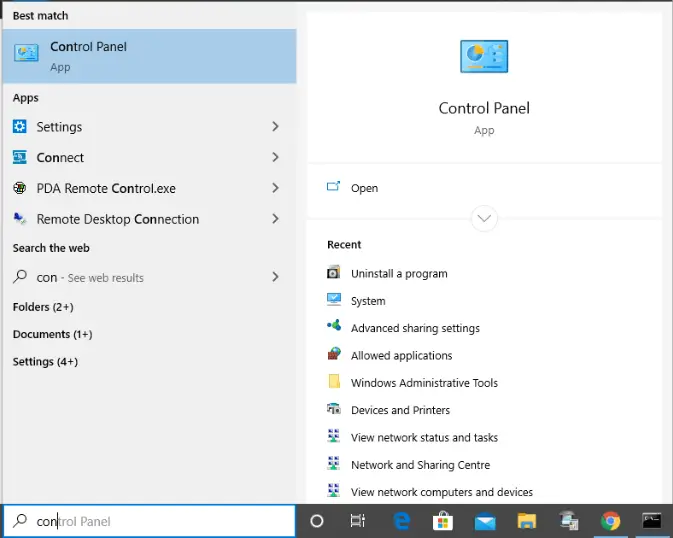
2nd Step: Now click the Control Panel and the Panel will be displayed on the screen.
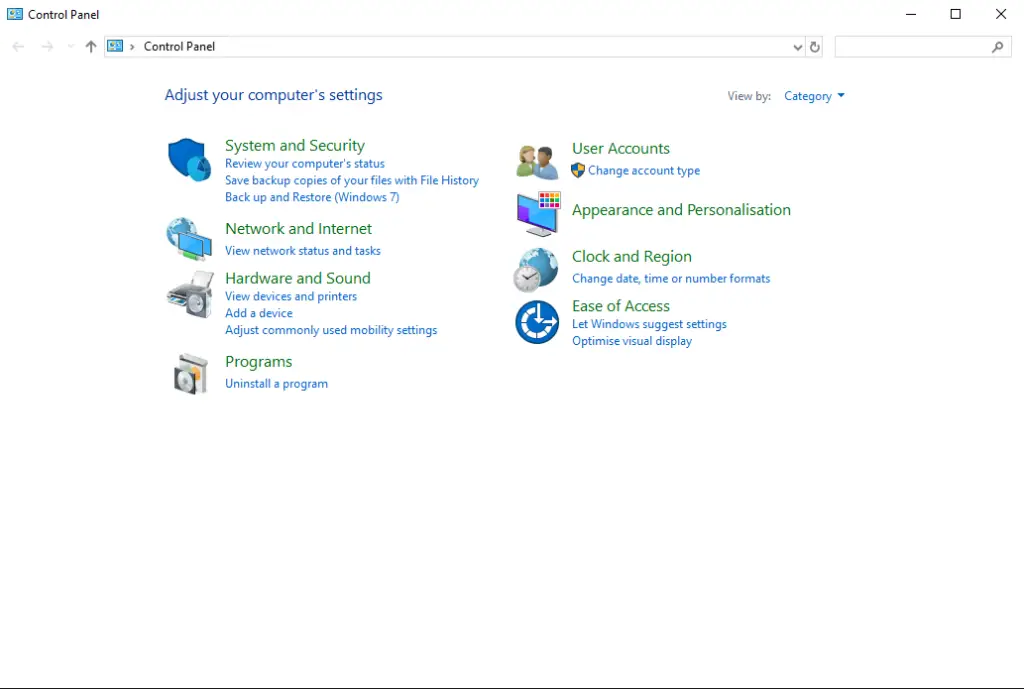
3rd Step: Click on the Programs icon and the second screen will be opened as shown in the following image.
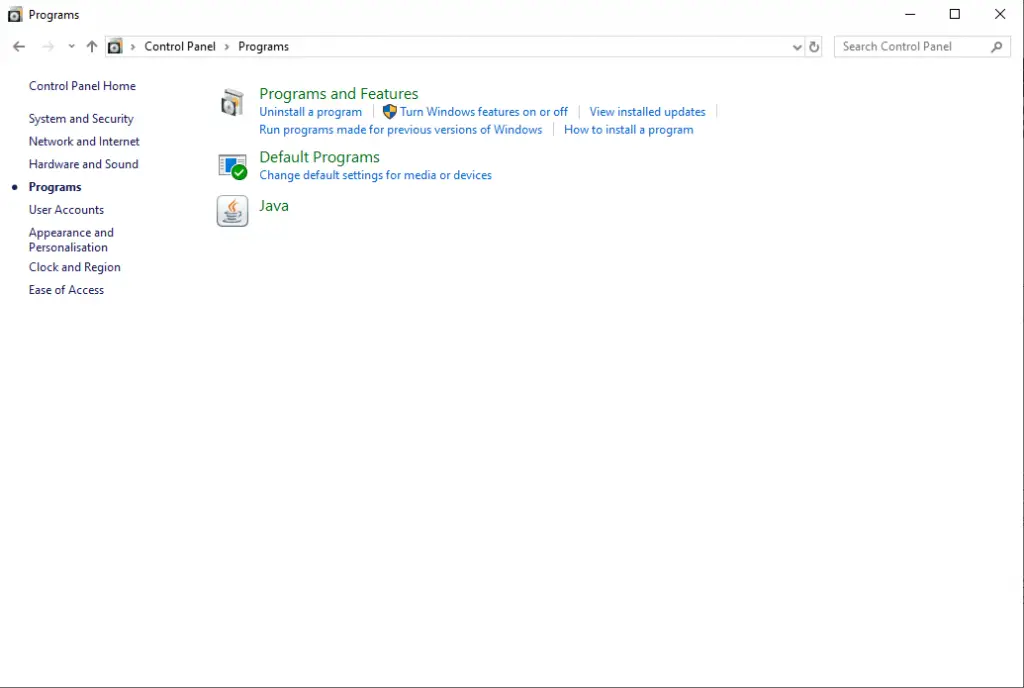
4th Step: Now Click on the java icon which is in the third position. I have circled with a red colour.
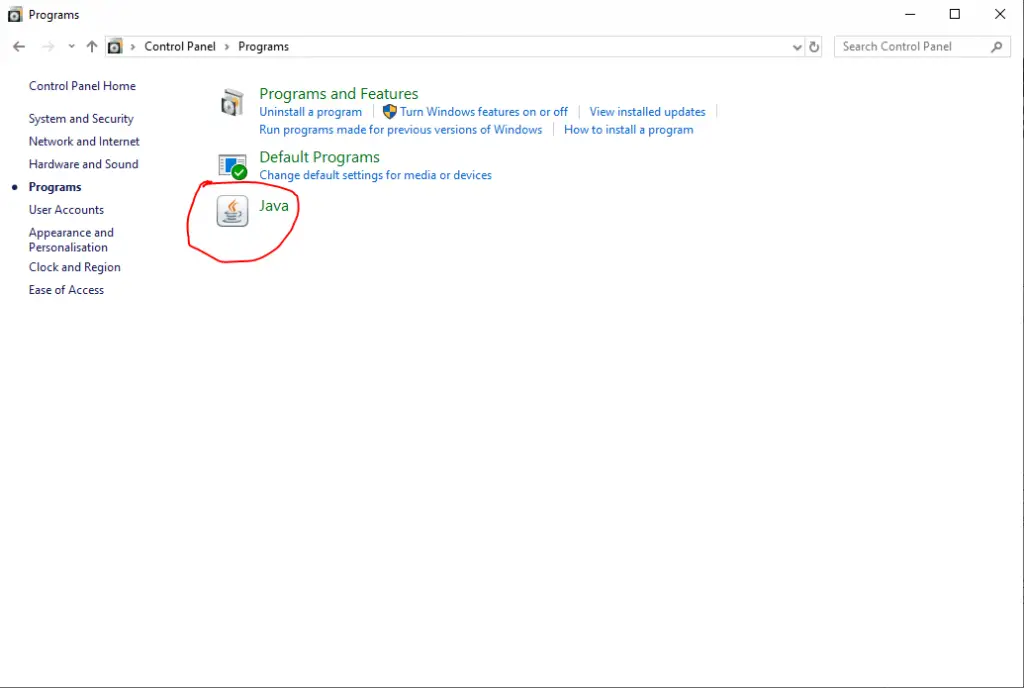
5th Step: After clicking on the java icon the java control panel will appear on the screen.
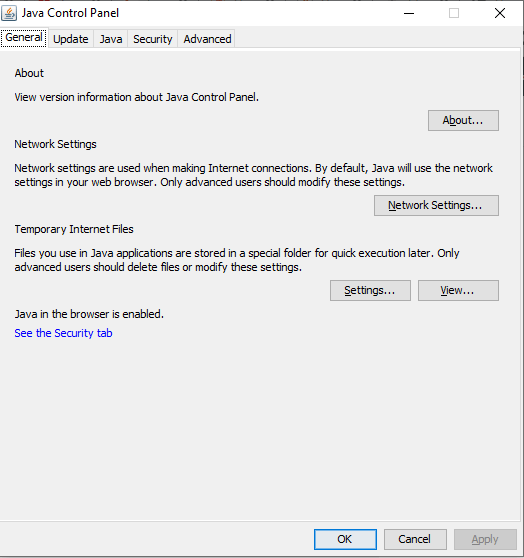
6th Step: Click on the about button situated on the top right corner. I have circled with a red colour.

7th Step: After Clicking on about button the Oracle window will appear which tells about the version of java installed in your Computer.
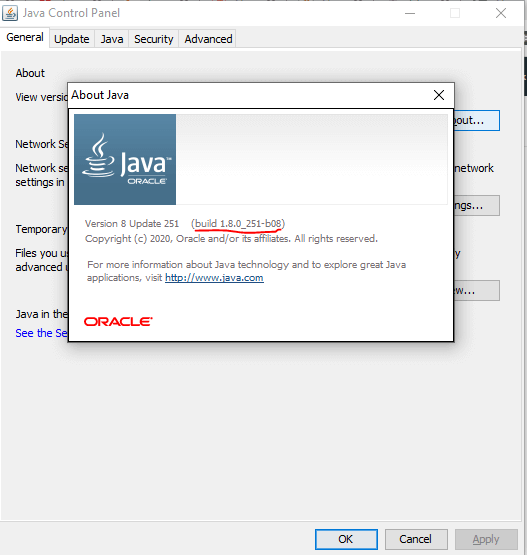
Similarly,
3. How to Check Java Version in Cmd For Windows 8
Following are the steps for checking the current java version installed in your Windows 8 PC.
1st Step: Right-click on the windows icon situated in the bottom left corner of the screen. The System Menu will be displayed above the start button.
2nd Step: Now click on the Run option which is at the third position from the bottom. The Run Program window will be displayed.
3rd Step: Now type cmd.exe next to the open tab and click Ok. The command prompt will be opened on the screen.
4th Step: Now type java -version in the command prompt and the press enter from the keyboard.
5th Step: Now the details of the installed java version will be displayed in the command prompt.
4. How to Check Java Version in Cmd for Windows 7 or Vista
1st Step: Click on the windows icon and then click on the all programs option and the list of programs installed on your PC will be displayed on the screen.
2nd Step: Now Click on the Accessories which is the sub-folder of the All Programs. After Clicking on Accessories the list of pre-installed windows programs will be displayed.
3rd Step: Select Command Prompt Application from the List and the command prompt will be displayed on the screen.
4th Step: Type java -version in cmd and press enter from the keyboard and the currently installed Java version will be displayed on the screen.
So this was the methods to Check the java version using Cmd and using Control Panel.
Now we will see the different types of versions of java till now which are founded by the oracle.
Different Versions of Java
JDK Alpha and Beta:
The JDK Alpha and Beta was founded in the year 1995 which have very unstable APIs.
JDK 1.0:
This is the first version of java which was founded on 23rd January 1996 which was the first stable version of java. Oracle named it is Oak. Java 1 comes with the private and protected which could be used together.
JDK 1.1:
This is the incremented version of java 1 so named as Java 1.1. The concept of the inner class, JavaBeans and the JDBC(Java DataBase Connectivity) were launched. JDK 1.1 was launched on 19th February 1997.
J2SE 1.2:
J2SE 1.2 was founded on 8th December 1998 which has a codename called as a playground. The full form of J2SE is Java 2 Platform Standard Edition). This release was very important which comes with Java Plug-in and the collection frameworks.
J2SE 1.3:
J2SE 1.3 was founded on 8th May 2000 with a codename called Kestrel. This version comes with additional features which include HotSpot JVM, Java Naming and Directory Interface(JNDI) and JavaSound.
J2SE 1.4:
J2SE 1.4 was found on 6th February 2002 with a codename Merlin. This is the first Java platform released under Java Community Process.
J2SE 5.0:
This Java version was founded on 30th September 2004 which was codenamed as Tiger. To reflect the level of maturity oracle renamed J2SE 1.5 to J2SE 5.0. This process was also released under Java Community Process.
The concept of Enumerations and static imports was discovered in this version.
Java SE 6:
Java SE 6 was founded on 11th December 2006 with a code-name of Mustang. The name J2SE was replaced with SE with additional features included like Scripting Language Support and JDBC 4.0 Support.
Java SE 7:
This version was founded on 28th July 2011 with a code-name called Dolphin. Originally it was launched on 7th July 2011 but was available on 28th July. Java SE 7 comes with additional features like JVM support for the Dynamic Languages and the string Added in the switch.
Java SE 8:
The code-name for Java SE 8 was given as Spider which is common among all the java developers. This version was founded on 18th March 2014 with additional features included as Language level support for Lambda Expression and the Annotation of Java Types.
Java SE 9:
This version’s release date was postponed many times by the oracle because of hope that version 9 would be better than other versions. So the Java SE 9 was finally released on 21st September 2017 which comes with new features like Money and Currency API, Java Linker, Automatic Scaling and Sizing.
Java SE 10:
This version was released on 20th March 2018. The main motive of this release was to remove the primitive data-types and move towards arrays to supports large data sets. This release was the important release which comes with 12 additional features.
Also Read:
